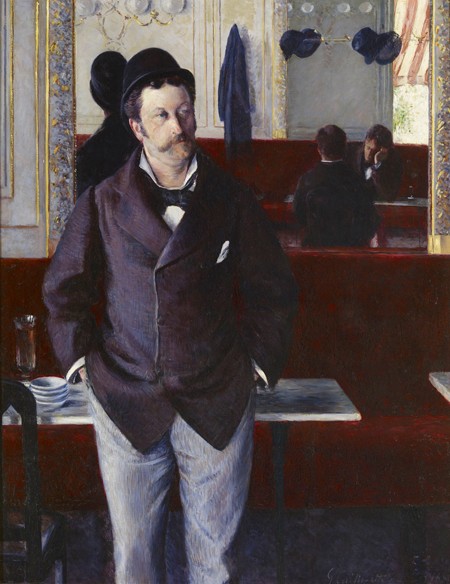My Ailsa Mellon Bruce Curatorial Sabbatical Fellowship enabled an often-yearned-for but rarely feasible practice: the
Scholars have come a long way from the characterization of Caillebotte as a talented amateur whose most significant contribution to impressionism was as a collector of early works by its artists and a supporter of their exhibitions. The centrality of his artistic production to the movement during its height, the six exhibitions held between 1876 and 1882, and the critical edge, or what he referred to as “intransigence,” of his paintings, were key revelations of the 2015 exhibition. Caillebotte’s move away from his provocative pictures in the mid-to-late 1880s toward riverscapes and garden scenes, in line with the movement’s shift toward landscape, have distracted focus from his more gripping figural work.
Although Caillebotte was very much involved in the communal movement that was impressionism, his pictures are discrete in compelling ways. He was younger than the other members of the group by almost a decade. His affluence distanced him from the lived reality and financial pressures that beset his confrères and liberated him from the need to cater his production to the tastes of collectors. Finally, his resolute bachelorhood and the consistently homosocial nature of his subject matter introduced new imagery to impressionist iconography.
Caillebotte’s painting reinforces both the art-political and the socially critical aspect of the movement. Among several critics, Joris-Karl Huysmans articulated the sardonic and satirical strains in the painter’s work, echoed in contemporary naturalist literature, and he positioned Caillebotte’s project as an extension of that of Édouard Manet. Caillebotte countered the celebratory and self-congratulatory spirit of the early Third Republic with images suggesting the disturbing regularity of the new cityscape, the unsanctioned activities that took place within it, and the undercurrent of isolation, alienation, and psychic pressure running beneath bourgeois culture. Critics helped articulate the disturbing nature of his stripped, perspectival distortions of Parisian cityscapes, his tense domestic interiors, and his strange still life paintings.
Caillebotte’s artistic mission was established with his first major painting, The Floor Scrapers, understood as socially charged by the Salon jury that rejected its submission in 1875. Contemporary critics received his frank, literally naked portrait of the grueling, repetitive, anonymous urban labor that supported the affluent arrondissements of Haussmann’s Paris as ugly and outrageous as well as a source of anxiety following so soon after the workers’ revolution of 1871. The Floor Scrapers, hanging near Degas’s laundress (Blanchisseuse) in the second
Addressing “modern” subjects generic to impressionism, such as café life, prostitution, the nude, and river boating, Caillebotte frequently replaced the potential of a hetero- with a homoerotic charge. This nonnormative position enhances the critical originality of his critique of Parisian life as transformed by Haussmanization. From the chilly clarity of his most famous picture, Paris Street, Rainy Day, to the horrific, sumptuously painted Calf ’s Head and Ox Tongue, Caillebotte expresses the anxiety beneath the shimmering surface of modernity. In fully returning his “voice,” absent from traditional art historiography, to the story of impressionism, we revisit an insistent realism set aside by the luscious landscapes, Claude Monet’s above all, of the 1880s.
